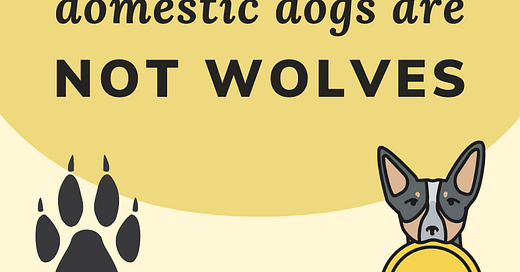Key ways my domestic dog is not a wolf
We need to respect our pets as the canines they are. It’s also vital we recognize “being a canine” does not directly equal “being a modern wolf”.
While domestic dogs and their closest relatives do share many similarities, several things set them apart—and influence the way we live with them. Here’s a look at some key differences that affect how I think about my relationship with Scout.
Table of contents and TLDR Instagram post summary
This article dives into:
Are dogs descended from wolves?
Domestic dogs show paedomorphism and neotenization
Dogs have far greater interspecies sociability than wolves
Domestic dogs have specifically evolved to live with humans
The below Instagram post summarizes key points in a more visual format.
Keep reading with a 7-day free trial
Subscribe to Paws and Reflect to keep reading this post and get 7 days of free access to the full post archives.






